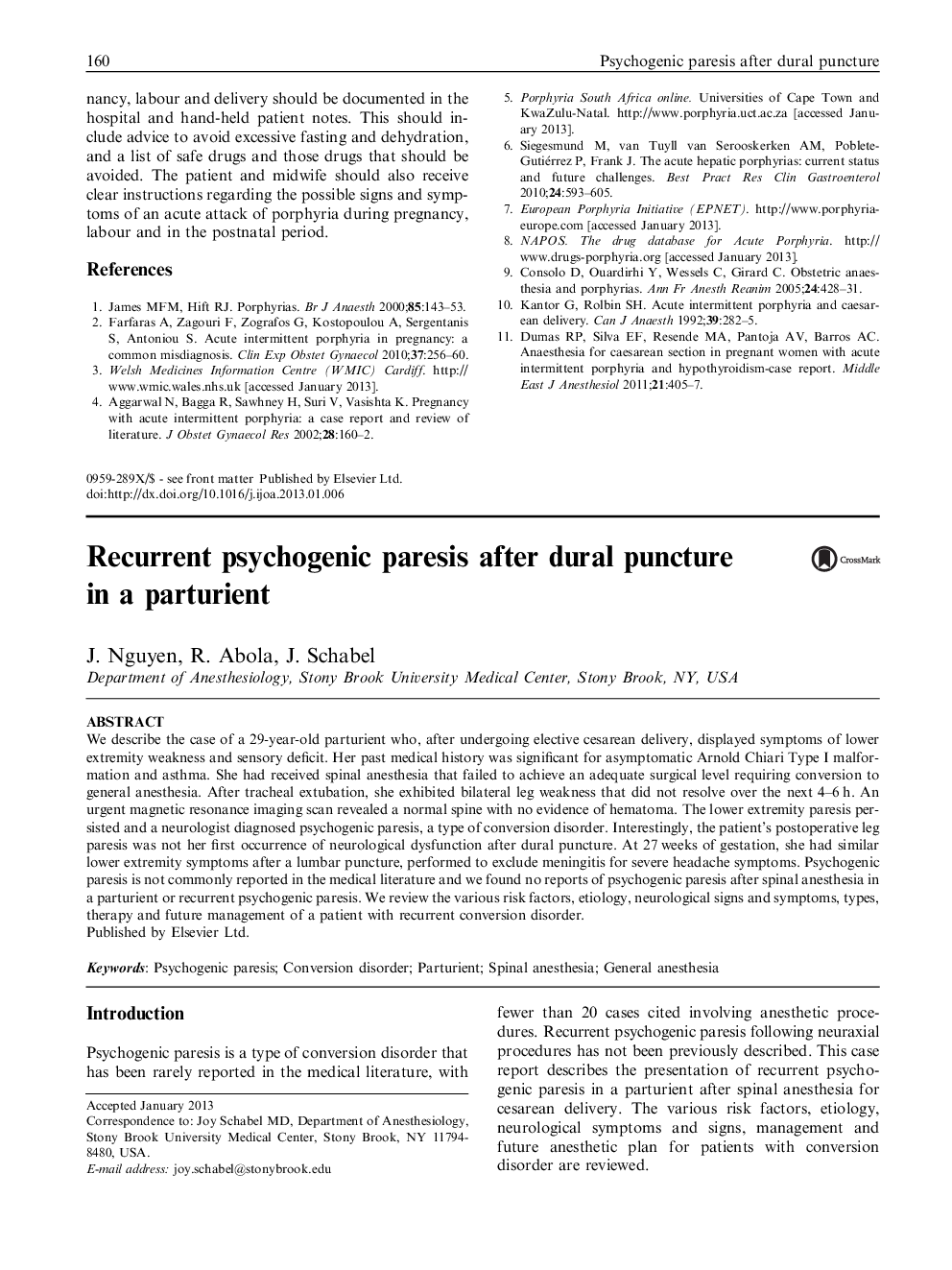| Article ID | Journal | Published Year | Pages | File Type |
|---|---|---|---|---|
| 2757846 | International Journal of Obstetric Anesthesia | 2013 | 4 Pages |
We describe the case of a 29-year-old parturient who, after undergoing elective cesarean delivery, displayed symptoms of lower extremity weakness and sensory deficit. Her past medical history was significant for asymptomatic Arnold Chiari Type I malformation and asthma. She had received spinal anesthesia that failed to achieve an adequate surgical level requiring conversion to general anesthesia. After tracheal extubation, she exhibited bilateral leg weakness that did not resolve over the next 4–6 h. An urgent magnetic resonance imaging scan revealed a normal spine with no evidence of hematoma. The lower extremity paresis persisted and a neurologist diagnosed psychogenic paresis, a type of conversion disorder. Interestingly, the patient’s postoperative leg paresis was not her first occurrence of neurological dysfunction after dural puncture. At 27 weeks of gestation, she had similar lower extremity symptoms after a lumbar puncture, performed to exclude meningitis for severe headache symptoms. Psychogenic paresis is not commonly reported in the medical literature and we found no reports of psychogenic paresis after spinal anesthesia in a parturient or recurrent psychogenic paresis. We review the various risk factors, etiology, neurological signs and symptoms, types, therapy and future management of a patient with recurrent conversion disorder.
